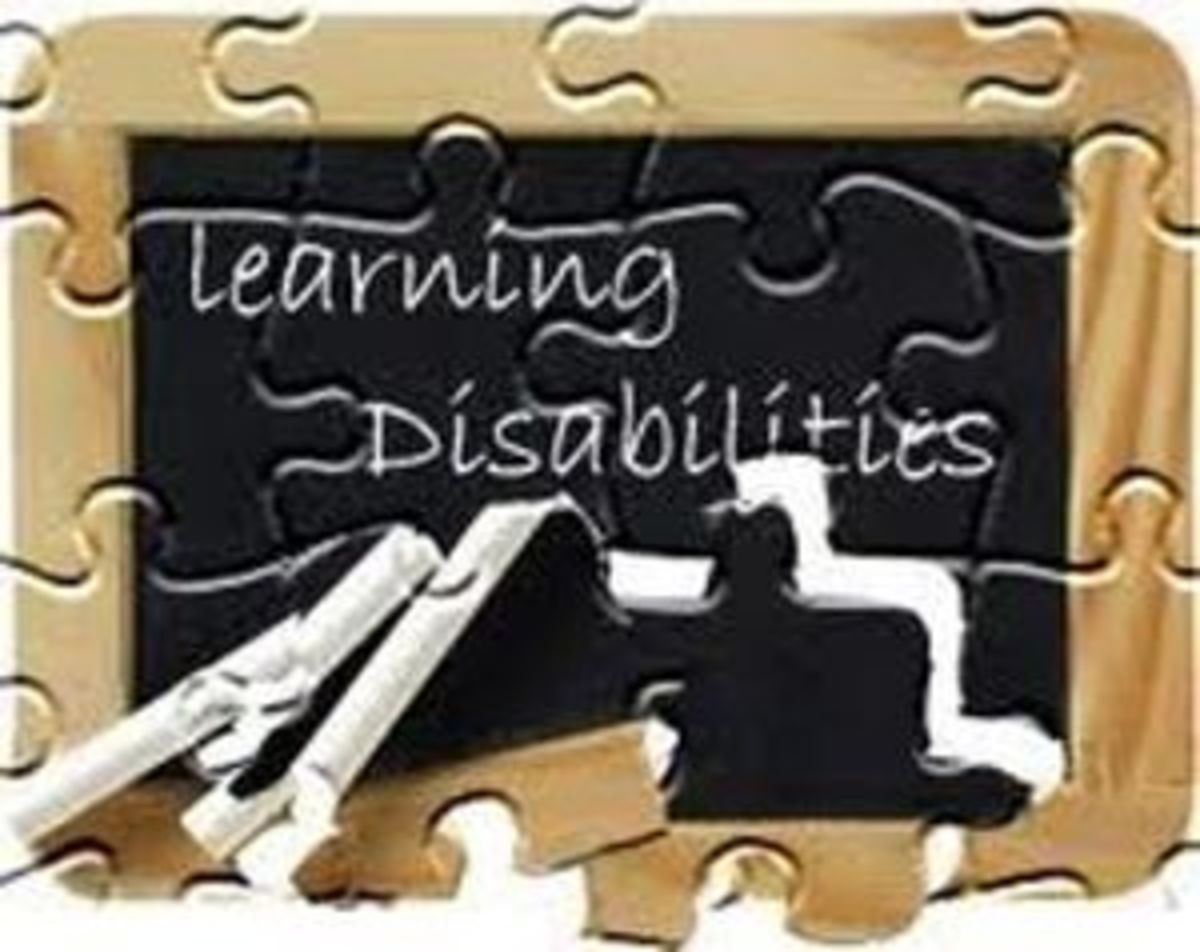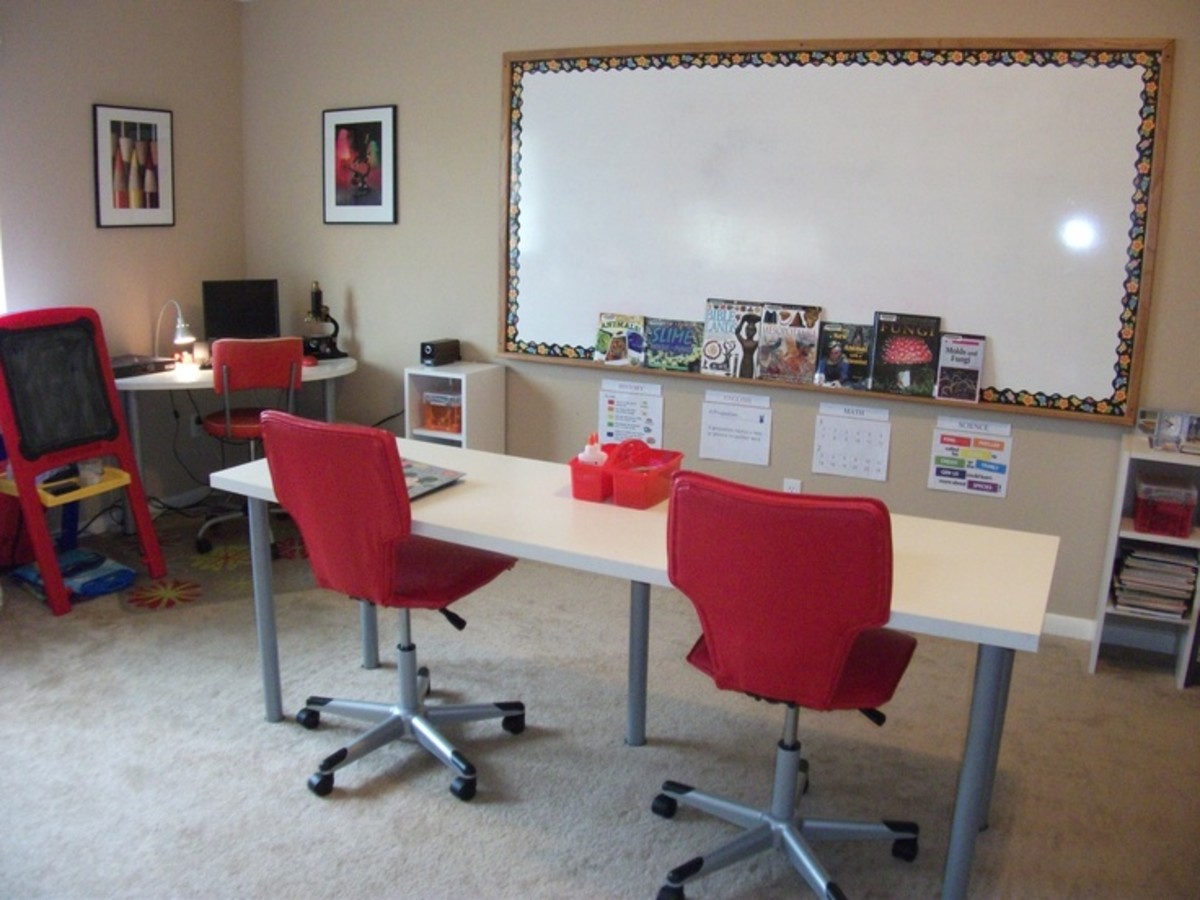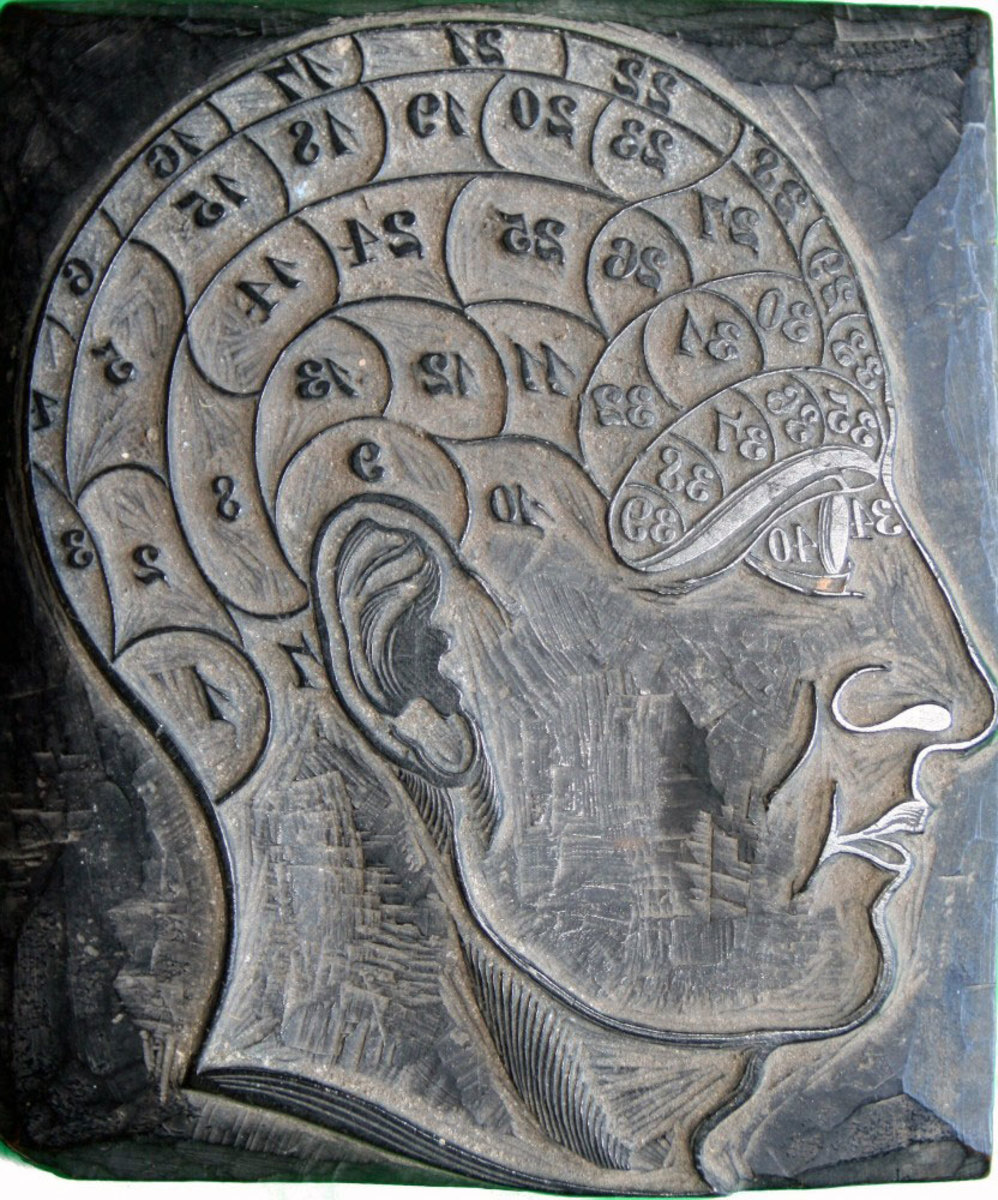Importance of Individual Education Plans for Students with Learning Disabilities
Each student deserves individualized attention from their teacher.

{a Literature Review}
One out of 11 post-secondary undergraduate students report having some sort of disability, with learning disabilities (LD) being the largest subgroup of the population, reports Orr and Bachman Hammig (2009, p. 181). With such a large demographic of students requiring special needs in the classroom it is important that educators understand how to best identify and accommodate students who do not fit within the accepted description of a traditional student. Identifying student disabilities is an important part of the educational process, since it seeks to help students glean the most from their educational experience. But how can schools identify the needs of students accurately? This literature review seeks to discuss how teachers can best put this knowledge of LDs when formulating students’ individualized education plans (IEPs).
Kretlow and Blatz (2011) note that knowing the best way to interpret testing results and working with a student is not always as simple as viewing the data, because each student deserves individual attention; characteristics may benefit from varied techniques and strategies; even students who display similar characteristics may benefit from varied techniques and strategies. Teachers should regularly administer brief quizzes to gauge individual student progress, and compare it to the normal grade-level standards, suggests Kretlow and Blatz, because “ongoing progress monitoring gives students with disabilities the best chance at achieving their goals”. (pp. 17-18). Effective teachers are mindful of what the Bible says in Psalm 139:4, that children are “fearfully and wonderfully made” (KJV), and adjust their teaching practices as necessary to adequately meet the needs of their students.
Individualized education plans (IEPs) help create a unique environment for students with disabilities learn best. Educators take into account the student’s current learning levels and create a road map of how to get closer to the standards of students of the same grade level. Boavida and Aguiar (2010) discuss the importance of creating quality IEPs for measuring effectiveness, noting
“Quality goals and objectives are important for (a) professionals and natural caregivers to know what, how, when and where to teach; (b) monitoring children’s progress; and (c) evaluating and reporting the effects of the intervention. The IEP goals and objectives often diverge, however, from recommended practices, because they are poorly written and are not functional or contextualized” (p. 234).
Boavida and Aguiar further suggest that high-quality IEP goals should be specific and family-centered to allow for better parental involvement and implementation into the home (p. 234). Frequent IEP review ensures that the plan is effective for the particular student, and that students are reaching their potential. Full inclusion, when students remain in the traditional classroom, correlates with IEPs since it recognizes that students have a right to participate with their peers. While full inclusion may not be the best option for every child, every student has a right to be treated the same as other students without condescension. If full inclusion is not feasible, at least some time with peers may benefit the students with LDs.
Not all schools have the same definition of what a learning disability is and is not. Interestingly, Fletcher, Lyon, Fuchs, and Barnes (2006) write that “no single problem has plagued the study of LDs more than the problem of identification…. Despite more than a century of efforts, definition issues remain inadequately resolved, though some progress has been made” (p. 25). Fletcher, Lyon, Fuchs, and Barnes further suggest that the primary issue with the lack of a definition stems from a lack of understanding of the “criteria by which different disorders are classified so that the resulting categories have both internal and external validity” (p. 26).
IEPs are specific to each student.

For example, the Taiwanese government describes LD as “significant problems of ability in attention, memory, comprehension, reasoning expression, perception, or coordination of perceptional-motor skills, caused by abnormally neuropsychological abilities, causing significant learning difficulty in listening, speaking, reading, writing, and doing mathematical calculations” (Yung-Ju, 2011, p. 51). Yung-Hu further explains that standardized tests, such as academic achievement tests compare IQ scores, the results may yield a diagnosis of LD, however the results also take into account a medical diagnosis (p. 51).
Fletcher et. al. (2006) reminds that not all LDs are simple to define, since some disabilities are observable while others, such as intellect, are unobservable (p. 27). Similarly, Fletcher notes
“At the heart of the definition problem is a lack of understanding of the criteria by which different disorders are classified so that the resulting categories have both internal and external validity. For this reason… we approach the definition issues from a classification perspective, reviewing evidence from the reliability and validity of dour different models; aptitude-achievement discrepancy, low achievement, individual differences, and response to instruction” (p. 26).
Ideally, special education should “provide the student with the resources, adapted instruction, and specialized assistance to mitigate the effects of his or her disability, as to allow the student to successfully benefit from the school’s general curriculum” notes Hibel, Farkas and Morgan (2010, p. 312). While the intention of placing a child into special education classes is generally a positive movement, however Hibel et. al. suggest that the stigma of being in a special education may cause others to label the student; the benefit of the slower learning pace and of personalized instruction is likely to far outweigh the stigma though.
Oakes (2012) discusses the history of LD diagnosis and treatment, noting that before the 19th century, there was rarely a formal distinction made between people with LDs and physical disabilities (p. 12). More often than not, people with any sort of disability were relegated to the workhouse instead of attending school, with the overall philosophy that disabled persons would not be able to learn, but at least they could work. According to Oakes, the American Association on Intellectual and Developmental Disabilities (AAIDD) first developed a definition of disability based on intellectual abilities, adaptive skills and age of onset, however Oak suggests that that the study of disabilities should not end with recent findings (p. 15). Fletcher et. al. (2006) note that the development of LDs as a diagnosis is due in part to educators who wanted to define students who underachieved in the 1960s (p. 25). Educators recognized that not all disabilities were physical in nature, and that students with LD were not worthless.
Fletcher et. al. (2006) note that the diagnosis of children identified with LDs has steadily increased since 1968, when the US government formally recognized students with handicapped conditions (p. 1). Fletcher et. al. further suggest that students with LDs represent about one-half of the students receiving special education services in the public school system (p. 1). This writer suggests that when educators better understand the implications of LDs they are more likely to better reach students and make longer-lasting impressions.
Although standardized and IQ testing is one popular method to help determine intelligence levels, Worrell (2009) there is not a singular method of identifying student LD (p. 242). Sparks and Lovett (2009) further suggest that prompt and adequate diagnosis of LD honors the student and treats the student with respect (p. 237). More than anything else, educators have a responsibility to produce adequate yearly progress and in their students (Byrnes, 2011, p. 243). This writer suggests that early and adequate identification of LD is more likely to produce the coveted yearly progress, and truly ensures that no child will be left behind in their academic and social endeavors.
O’Donnell and Mitchell (2011) remind that when determining if a student has severe learning disabilities, teachers should compare the student’s current levels of achievement with their academic ability (p. 83). Realizing adequate yearly progress is key to determining the success of an IEP, however Boavida and Aguiar (2010) remind educators that “because children with more severe disabilities might make progress in smaller steps than higher functioning children, it might be necessary for special education teachers to pay more attention to the measurability criterion” (p. 242).
Identifying LDs is a big responsibility, and is often as not easily identifiable as a medical diagnosis might suggest. For example, Towles-Reeves, Kleinert and Muhomba (2009) suggest that alternative assessment require the inclusion of a range of students in order to make evaluation more meaningful (p. 233). This directly relates to the inclusion of No Child Left Behind (NCLB) legislation that has helped educators better identify LD at a younger age.
Sincerely, Yung-Ju (2011) notes that Taiwanese students with LD remain in the same classroom with other students through most of the day, yet they do spend 2 to 4 hours a week with specific instruction to help bring them up to remedial learning (p. 53). Yung-Ju summarizes the Taiwanese education initiative as a shift in focus from “describing a group of students to providing them with the appropriate services and education” needed to suit their LD (p. 54).
Orr and Bachman Hammig (2009) discuss the importance of universal design for learning (UDL) with regard to post-secondary instruction. According to Orr and Bachman Hammig, the tenants of UDL include: multiple means of representation, multiple means of expression, and multiple means of engagement (p. 182). The phrase “multiple means of repression” refers presenting material with a variety of teaching methods so that students with LD can better understand the course content; the phrase “multiple means of expression” refers to helping students express their understanding through multiple modes; the phrase “multiple means of engagement” refers to different methods of interaction with course material (pp. 182-183).
While the VARK theory is applicable to students with LDs, non-disabled students also benefit from such teaching techniques. Implementing the VARK concepts into
For students with LDs, academic success is often dependent upon how well the teacher instructs students in the course content and the methods by which the teacher uses to instruct material. Using multiple teaching methods, which tap into the student learning preferences, enables the individual student to learn in the method that he most identifies with. Learning preferences, or the methods by which a student prefers to process information, can be divided into multiple ways, however this writer prefers the ease of Fleming’s (2006) “VARK” system. The V refers for the visual preference, the A refers to the aural preferences, the R refers to the reading/writing preference and the K refers to the kinesthetic or hands-on approach to learning.
Just as some students prefer learning in one method, teachers often prefer to use one teaching method to another. Carson (2009) notes that “awareness of preferred learning styles directly and dramatically impact[s] all our educational choices (p. 96). Understanding the nuances of the four major learning preferences is not difficult; neither is recognizing how students with LD may benefit from the use of varying teaching techniques. For example, a student with dyslexia may struggle with classes that stress the reading/writing portion of a class. In order to accommodate this student, a teacher may allow a student to give an oral presentation instead, or create a diagram, chart or visual representation of the material instead. Similarly, the student suffering from a stuttering problem may assigned to write a script for another student to perform.
In addition to the Fleming (2009) VARK multi-modal learning preference model, he notes that there is also two main ways of processing information- lumping and splitting. “Lumpers” prefer to get an overview of the concept, also know as the “big picture”, before analyzing it, whereas “splitters” prefer to analyze content and pick through the details. Teachers can accommodate both groups of students in the classroom by using an outline in a PowerPoint presentation. Fleming suggests showing the entire outline for a brief period, which allows the “lumpers” to gain understanding of the subject matter, then focusing the PowerPoint on the current topic to allow “splitters” a chance to not be distracted by too much overwhelming information (Fleming, 2009, “Lumpers and Splitters”).
Fletcher et. al. (2006) reminds that classifications of LDs help educators group together correlated subgroups, which may help with classroom instruction. For example, it may be easier for the special education teacher to work with several students with the same challenge rather than explaining the same material repeatedly. Classifying students will also help when intervening, notes Fletcher, et. al., who suggests that some disabilities are classroom content specific, and not necessarily applicable throughout the entire day and should not cloud the student’s overall label as a student worth of learning.
Ludlow (2012) suggests that parental involvement — especially with special-needs students — has long been beneficial and may be more effective that teacher-directed intervening, noting
It is clear that strong teacher-family relationships are essential to effective educational programs for students with disabilities. Special educators work with students for only a few hours per day, and for just a few years at most. Our efforts, although critical, have only a focused and time-limited impact on their lives. On the other hand, families – whether they are birthed, adopted or foster families — support children 24/7, throughout their lifetimes. Their efforts have a broader and more far-reaching influence in the end. To achieve the integration of learning experiences in and out of school that leads to success for all students, we really have no choice but to make families our partners (p. 4).
Kretlow and Blatz (2011) simplify the discussion by noting “scientifically based research methods must be used in answering the question ‘what is most likely to work?’” when formulating IEPs (p. 10). Educators must understand that since God creates each student individually, each student deserves an IEP formulated to consider each student’s own LDs and preferences. Catering IEPs to the student’s specific needs ensures that the student will perform better both academically and socially and provides an environment most conducive to learning. When teachers identify the best methods to reach their students, the IEP will be a success.
References
Boavida, T. and Aguiar, C. (2010). Quality of individualized education program goals of preschoolers with disabilities. Infants & Young Children 23(3), 233-243.
Byrnes, M. (2011). Taking sides: Clashing views in special education. New York, NY: McGraw Hill.
Carson, D. (2009). Is style everything? Teaching that achieves its objectives. Cinema Journal, 48(3), 95-101. Retrieved from EBSCOhost.
Fleming, N. (2009). 55 Strategies for Teaching. Retrieved from http://www.vark-learn.com/english/page.asp?p=products_B04&back=education
Fleming, N. (2006). Teaching and learning styles: VARK strategies. The Digital Print and Copy Centre: New Zealand.
Fletcher, J.M., Lyon, G.R., Fuchs, L.S. and Barnes, M.A. (2006). Learning disabilities: From identification to intervention. New York: NY, The Guilford Press.http://site.ebrary.com.ezproxy.liberty.edu:2048/lib/liberty/docDetail.action?docID=10176570
Hibel, J., Farkas, G., & Morgan, P. (2010). Who Is Placed into Special Education? Sociology of Education, 83(4), 312-332. Retrieved May 2, 2012, from ProQuest Education Journals. doi 2460292871
Kretlow, A.G. and Blatz, S.L. (2011). The ABCs of evidence-based practice for teachers. Teaching Exceptional Children 43(5), 8-19. doi 2343939791
Ludlow, B. (2012). Teachers + families = success for all students. Teaching Exceptional Children, 44(3), 4. doi 2553965371
O’Donnell, P.S. and Miller, D.N. (2011). Identifying students with specific learning disabilities: School psychologists’ acceptability of the discrepancy model versus response to intervention. Journal of Disability Policy Studies 22(2) 83-94. doi 10.1177/1044207310395724
Oakes, P. (2012). Assessment of learning disability: a history. Learning disability practice, Health and Medical Complete, 15 (1), 12-16. doi 2610334431
Orr, A. and Bachman Hammig, S. (2009). Inclusive postsecondary strategies for teaching students with learning disabilities: A review of the literature. Learning Disability Quarterly 32(3), 181-196.
Sparks, R.L. and Lovett, B.J. (2009). Objective criteria for classification of postsecondary students as learning disabled: Effects on prevalence rates and group characteristics. Journal of Learning Disabilities, 42(3), 230-239. doi: 1686765821
Towles-Reeves, E. Kleinert, H. and Muhomba, M. (2009). Alternate assessment: Have we learned anything new? Exceptional Children, 75(2), 233-252.
Worrell, F.C. (2009). Myth 4: A single test score or indicator tells us all we need to know about giftedness. Gifted Child Quarterly 53(4), 242-244. doi: 10.1177/0016986209346828
Yun-Ju, H. (2011). Educating students with learning disabilities in Taiwan. Intervention in School and Clinic, 47, 50- 55. doi: 10.1177/1053451211406540








